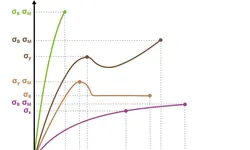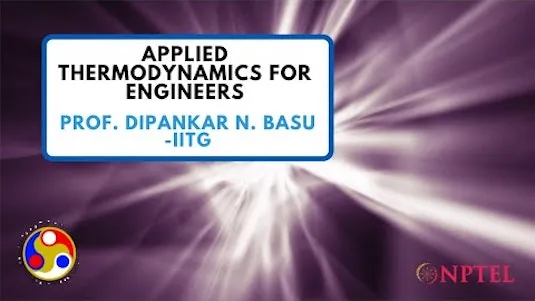
Phase Diagrams 
This course provides an in-depth look at phase diagrams, with a focus on the Fe-Fe3C diagram. Students will gain a comprehensive understanding of the diagram and its applications, and learn how to predict the phases and microstructures of steel alloys based on their composition. ▼
ADVERTISEMENT
Course Feature
![]() Cost:
Cost:
Free
![]() Provider:
Provider:
Coursera
![]() Certificate:
Certificate:
Paid Certification
![]() Language:
Language:
English
![]() Start Date:
Start Date:
22nd May, 2023
Course Overview
❗The content presented here is sourced directly from Coursera platform. For comprehensive course details, including enrollment information, simply click on the 'Go to class' link on our website.
Updated in [March 06th, 2023]
This course will provide an overview of phase diagrams and their use in predicting the phases and microstructures of steel alloys. Students will learn the fundamentals of phase diagrams, including the Fe-Fe3C phase diagram. They will also learn how to use the Fe-Fe3C phase diagram to predict the possible phases and microstructures of a steel alloy based on its composition.
The course will begin with an introduction to phase diagrams and their use in predicting the phases and microstructures of steel alloys. Students will learn the basics of phase diagrams, including the Fe-Fe3C phase diagram. They will also learn how to use the Fe-Fe3C phase diagram to predict the possible phases and microstructures of a steel alloy based on its composition.
The course will then move on to a more detailed exploration of the Fe-Fe3C phase diagram. Students will learn how to interpret the diagram and use it to predict the possible phases and microstructures of a steel alloy based on its composition. They will also learn how to use the diagram to determine the temperature and pressure conditions necessary to achieve a desired phase or microstructure.
The course will conclude with a discussion of the practical applications of phase diagrams. Students will learn how to use phase diagrams to optimize the properties of steel alloys. They will also learn how to use phase diagrams to troubleshoot problems with steel alloys.
By the end of the course, students will have a thorough understanding of phase diagrams and their use in predicting the phases and microstructures of steel alloys. They will be able to use the Fe-Fe3C phase diagram to predict the possible phases and microstructures of a steel alloy based on its composition. They will also be able to use the diagram to determine the temperature and pressure conditions necessary to achieve a desired phase or microstructure. Finally, they will be able to use phase diagrams to optimize the properties of steel alloys and troubleshoot problems with steel alloys.
[Applications]
The application of this course can be seen in the field of materials science. After completing this course, students will be able to use phase diagrams to predict the possible phases and microstructures of a steel alloy based on its composition. This knowledge can be used to design and develop new materials with specific properties. Additionally, students will be able to use phase diagrams to analyze the effects of heat treatment on the microstructure of a material. This knowledge can be used to optimize the heat treatment process for a given material.
[Career Paths]
1. Metallurgist: Metallurgists are responsible for studying and manipulating the physical and chemical properties of metals and alloys. They use phase diagrams to understand the behavior of metals and alloys under different conditions and to develop new materials. As the demand for new materials increases, the need for metallurgists is expected to grow.
2. Materials Scientist: Materials scientists use phase diagrams to study the properties of materials and develop new materials. They use phase diagrams to understand the behavior of materials under different conditions and to develop new materials with specific properties. With the increasing demand for new materials, the need for materials scientists is expected to grow.
3. Quality Control Engineer: Quality control engineers use phase diagrams to ensure that materials meet the required specifications. They use phase diagrams to understand the behavior of materials under different conditions and to ensure that materials meet the required specifications. As the demand for new materials increases, the need for quality control engineers is expected to grow.
4. Process Engineer: Process engineers use phase diagrams to design and optimize production processes. They use phase diagrams to understand the behavior of materials under different conditions and to design and optimize production processes. With the increasing demand for new materials, the need for process engineers is expected to grow.
[Education Paths]
1. Materials Science and Engineering: Materials Science and Engineering is a field of study that focuses on the properties and behavior of materials. It is a multidisciplinary field that combines elements of physics, chemistry, and engineering. Developing trends in this field include the use of advanced materials such as nanomaterials, biomaterials, and smart materials.
2. Metallurgy: Metallurgy is the study of metals and their properties. It is a multidisciplinary field that combines elements of physics, chemistry, and engineering. Developing trends in this field include the use of advanced materials such as nanomaterials, biomaterials, and smart materials.
3. Chemical Engineering: Chemical Engineering is a field of study that focuses on the design and operation of chemical processes. It is a multidisciplinary field that combines elements of physics, chemistry, and engineering. Developing trends in this field include the use of advanced materials such as nanomaterials, biomaterials, and smart materials.
4. Mechanical Engineering: Mechanical Engineering is a field of study that focuses on the design and operation of mechanical systems. It is a multidisciplinary field that combines elements of physics, chemistry, and engineering. Developing trends in this field include the use of advanced materials such as nanomaterials, biomaterials, and smart materials.
Course Provider

Provider Coursera's Stats at AZClass
Discussion and Reviews
0.0 (Based on 0 reviews)
Explore Similar Online Courses

How To Make A Wordpress Website 2017 -Elementor Page Builder

Balance Sheet Accounting Equation

Python for Informatics: Exploring Information

Social Network Analysis

Introduction to Systematic Review and Meta-Analysis

The Analytics Edge

DCO042 - Python For Informatics

Causal Diagrams: Draw Your Assumptions Before Your Conclusions

Whole genome sequencing of bacterial genomes - tools and applications

Viscous Fluid Flow

Metamorphic Petrology & Thermodynamics

Applied Thermodynamics For Engineers
 Related Categories
Related Categories
 Popular Providers
Popular Providers
Quiz
 Submitted Sucessfully
Submitted Sucessfully
1. What is the main focus of this course?
2. What can the Fe-Fe3C phase diagram be used for?
3. What is the most important concept to understand in this course?
4. What is the Fe-Fe3C phase diagram used for?
Correct Answer: It is used to predict the possible phases and microstructures of a steel alloy based on its composition.


Start your review of Phase Diagrams